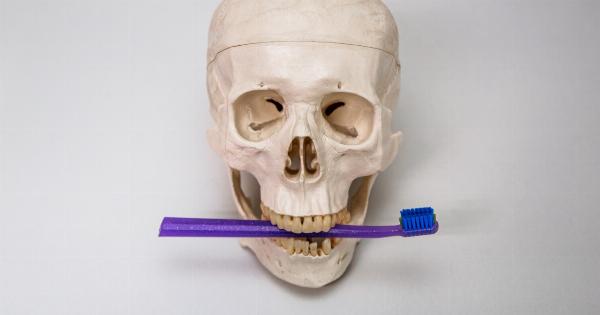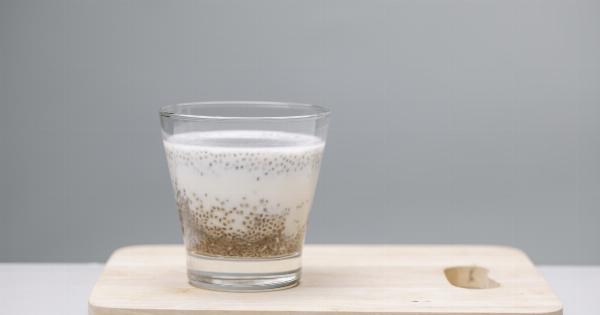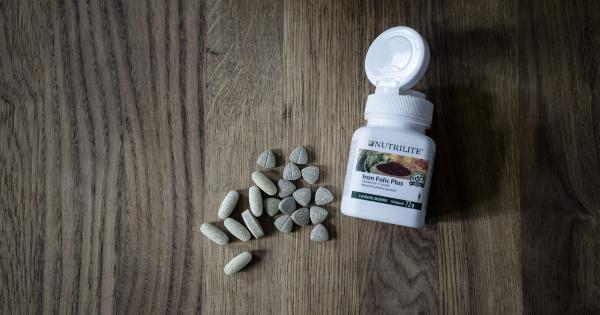Osteoporosis is a condition characterized by weakened bones, making them more likely to fracture. It is most commonly associated with older women, although it can affect people of all ages and genders.
In recent years, researchers have been exploring various factors that may contribute to the development of osteoporosis, and their findings suggest that mood and emotional well-being may play a significant role in bone health.
The Connection Between Mood and Osteoporosis
A growing body of evidence suggests that there is a strong link between mood and osteoporosis risk in women.
Several studies have found that individuals with higher levels of stress, anxiety, and depression are more prone to developing osteoporosis than those who report lower levels of negative affect.
One possible explanation for this association is the impact of stress hormones on bone metabolism. When a person is under stress, their body releases cortisol, a hormone that has been shown to have negative effects on bone density and strength.
Prolonged exposure to high levels of cortisol can lead to bone loss and increase the risk of fractures.
Furthermore, chronic stress triggers other physiological responses that can further contribute to osteoporosis.
For example, when the body is in a constant state of stress, it tends to produce lower levels of estrogen, a hormone that plays a crucial role in maintaining bone density. Estrogen deficiency is a well-known risk factor for osteoporosis in women, as it accelerates bone loss and diminishes bone strength.
In addition to these hormonal effects, researchers have also found that psychological factors such as depression and anxiety can indirectly contribute to osteoporosis risk.
Individuals experiencing these mood disorders may be more likely to engage in unhealthy lifestyle habits, such as smoking, excessive alcohol consumption, and poor nutrition, all of which have been linked to increased bone loss and osteoporosis.
The Role of Positive Emotions in Preventing Osteoporosis
While negative emotions have been associated with higher osteoporosis risk, recent studies have started to explore the potential protective effects of positive emotions on bone health.
Positive affect encompasses emotions such as happiness, contentment, and optimism, among others.
A study published in the Journal of Aging and Health found that postmenopausal women who reported higher levels of positive affect had greater bone mineral density (BMD) compared to those with lower positive affect scores.
BMD is a measure of bone strength and density, and lower scores are indicative of weaker bones.
Another study conducted at the Tohoku University in Japan examined the relationship between positive emotions and BMD in a sample of older women.
The researchers found that women with a more positive outlook on life had significantly higher BMD in their lumbar spines and femoral necks compared to those with more negative emotions.
These findings suggest that cultivating positive emotions may have a protective effect against osteoporosis by improving bone health.
While the exact mechanisms behind this relationship are not yet fully understood, several hypotheses have been proposed.
Possible Mechanisms Explaining the Relationship
One explanation is that positive emotions may help to reduce the production of stress hormones like cortisol, which, as mentioned earlier, have been linked to bone loss.
By keeping cortisol levels in check, individuals with positive affect may be less susceptible to the detrimental effects of chronic stress on bone health.
Furthermore, positive emotions have been shown to stimulate the release of endorphins, which are natural chemicals that promote feelings of well-being and happiness.
Endorphins have been found to have analgesic properties, meaning they can help to reduce pain perception. This is relevant to osteoporosis as fractures resulting from weakened bones can cause significant pain and discomfort.
By increasing the release of endorphins, positive emotions may indirectly reduce the risk of fractures by promoting a higher pain tolerance.
Positive affect has also been associated with healthier behaviors and lifestyle choices.
Individuals with higher levels of happiness and optimism are more likely to engage in physical activity, have better diets, and avoid detrimental habits such as smoking or excessive drinking. These behaviors have a direct impact on bone health, as regular exercise, proper nutrition, and avoiding harmful substances are all key factors in maintaining strong bones.
Implications for Osteoporosis Prevention and Treatment
The emerging evidence regarding the association between mood and osteoporosis risk has significant implications for prevention and treatment strategies.
By addressing mood disorders such as anxiety and depression, healthcare professionals may be able to indirectly reduce the risk of osteoporosis in their patients.
Psychological interventions that target stress reduction, the improvement of emotional well-being, and the development of positive coping strategies may help to mitigate the negative impact of stress on bone health.
Cognitive-behavioral therapy (CBT), mindfulness-based stress reduction (MBSR), and other evidence-based therapies have shown promising results in reducing stress levels and improving both emotional and physical well-being.
Moreover, clinicians may encourage patients to engage in activities that promote positive emotions, such as practicing gratitude, engaging in hobbies and interests, and maintaining social connections.
These activities not only have potential benefits in terms of improving mood but may also indirectly contribute to better bone health by promoting a healthier lifestyle.
It is important to note that while positive emotions appear to have a protective effect against osteoporosis, they are not a standalone solution.
Other risk factors such as age, genetics, hormonal changes, and certain medical conditions cannot be overcome solely through positive affect. However, incorporating strategies to enhance emotional well-being alongside other preventive measures can contribute to overall bone health and potentially reduce the risk of osteoporosis.
Conclusion
The relationship between mood and osteoporosis risk in women is an exciting area of research that is shedding light on the multifaceted influences on bone health.
The evidence suggests that negative emotions, particularly chronic stress, anxiety, and depression, are associated with higher rates of osteoporosis. Conversely, positive emotions, including happiness, contentment, and optimism, appear to have a protective effect by promoting better bone mineral density and healthier lifestyle choices.
While further studies are needed to better understand the exact mechanisms behind this relationship, the existing evidence supports the integration of psychological interventions and strategies to enhance emotional well-being into osteoporosis prevention and treatment plans. By addressing mood and emotional health, healthcare professionals can take a more comprehensive approach to promoting bone health and reducing the risk of fractures in women.































